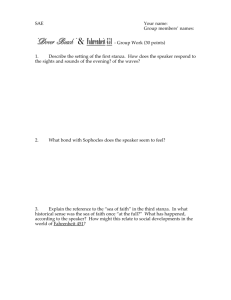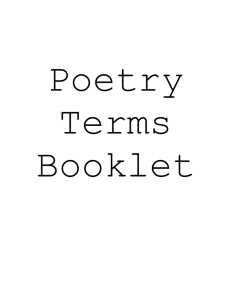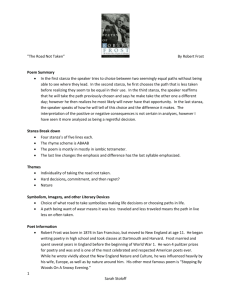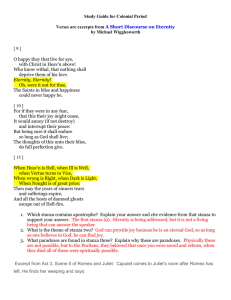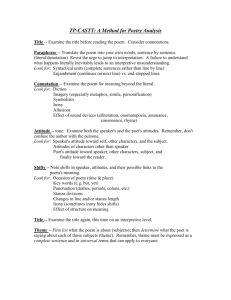Introduction to Poetry - Greer Middle College || Building the Future
advertisement
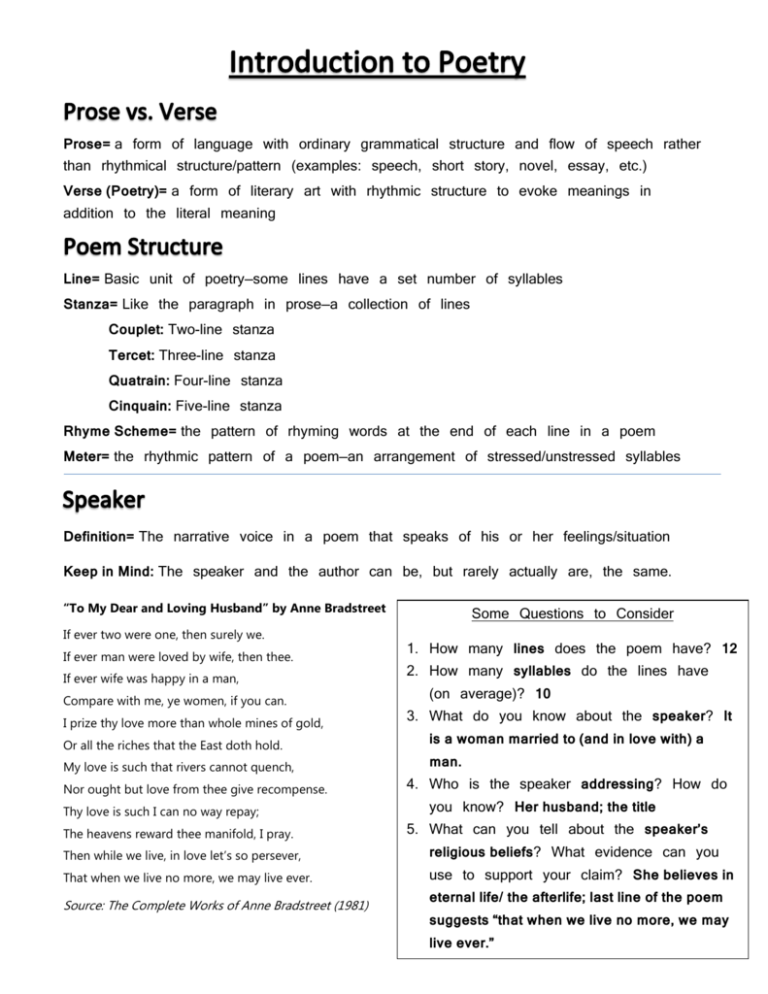
Prose= a form of language with ordinary grammatical structure and flow of speech rather than rhythmical structure/pattern (examples: speech, short story, novel, essay, etc.) Verse (Poetry)= a form of literary art with rhythmic structure to evoke meanings in addition to the literal meaning Line= Basic unit of poetry—some lines have a set number of syllables Stanza= Like the paragraph in prose—a collection of lines Couplet: Two-line stanza Tercet: Three-line stanza Quatrain: Four-line stanza Cinquain: Five-line stanza Rhyme Scheme= the pattern of rhyming words at the end of each line in a poem Meter= the rhythmic pattern of a poem—an arrangement of stressed/unstressed syllables Definition= The narrative voice in a poem that speaks of his or her feelings/situation Keep in Mind: The speaker and the author can be, but rarely actually are, the same. “To My Dear and Loving Husband” by Anne Bradstreet If ever two were one, then surely we. If ever man were loved by wife, then thee. If ever wife was happy in a man, Compare with me, ye women, if you can. I prize thy love more than whole mines of gold, Some Questions to Consider 1. How many lines does the poem have? 12 2. How many syllables do the lines have (on average)? 10 3. What do you know about the speaker? It Or all the riches that the East doth hold. is a woman married to (and in love with) a My love is such that rivers cannot quench, man. Nor ought but love from thee give recompense. Thy love is such I can no way repay; The heavens reward thee manifold, I pray. 4. Who is the speaker addressing? How do you know? Her husband; the title 5. What can you tell about the speaker’s Then while we live, in love let’s so persever, religious beliefs? What evidence can you That when we live no more, we may live ever. use to support your claim? She believes in Source: The Complete Works of Anne Bradstreet (1981) eternal life/ the afterlife; last line of the poem suggests “that when we live no more, we may live ever.”
